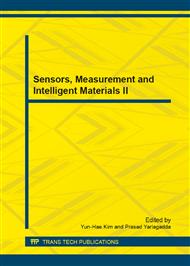p.675
p.680
p.685
p.689
p.693
p.699
p.703
p.710
p.715
Impedance Control System for a Biped Skating Robot
Abstract:
This paper studied impedance control problem for a biped skating robot. Impedance control for ground reaction force which is realized through varying load impedance between supporting leg and ground to maintain flexible contact is vital to motion control problem. Biped skating motion is divided into three phase, i.e. leg swing phase, weight reception phase and supporting phase. During weigh reception and supporting phase, one the of the robot legs has pushed onto ground to generated reaction force which must be controlled for dynamic stability. During swing phase a PID controller is used. Impedance control is realized by varying the load impedance between supporting leg and ground to maintain flexible contact. By proposed impedance control method, a dynamic stable skating movement controller was successfully developed for the biped robot with skating speed of 0.13 m/s.
Info:
Periodical:
Pages:
693-696
Citation:
Online since:
December 2013
Authors:
Keywords:
Price:
Сopyright:
© 2014 Trans Tech Publications Ltd. All Rights Reserved
Share:
Citation:


